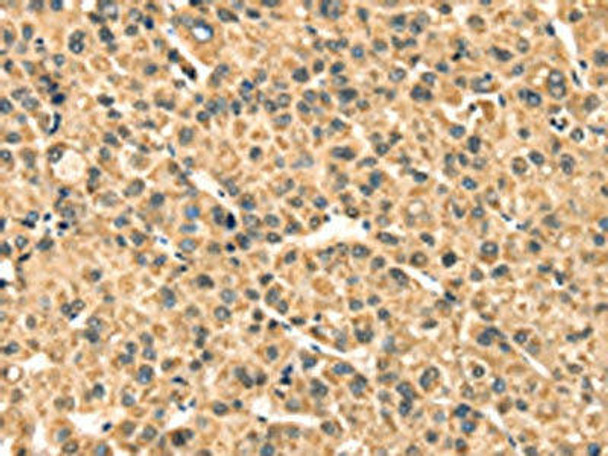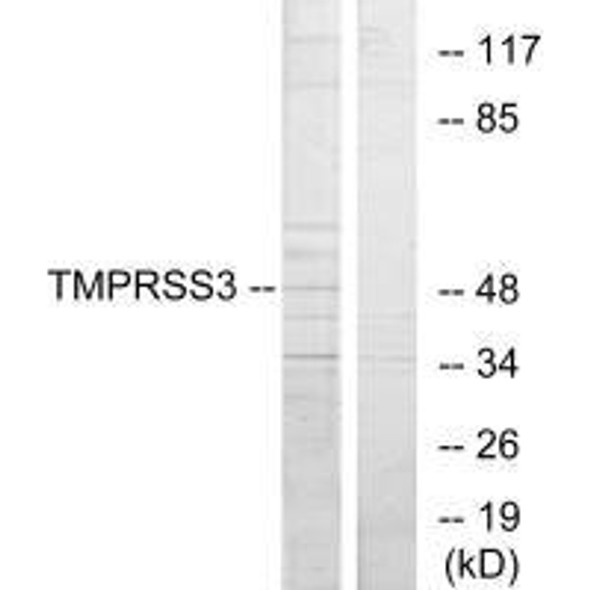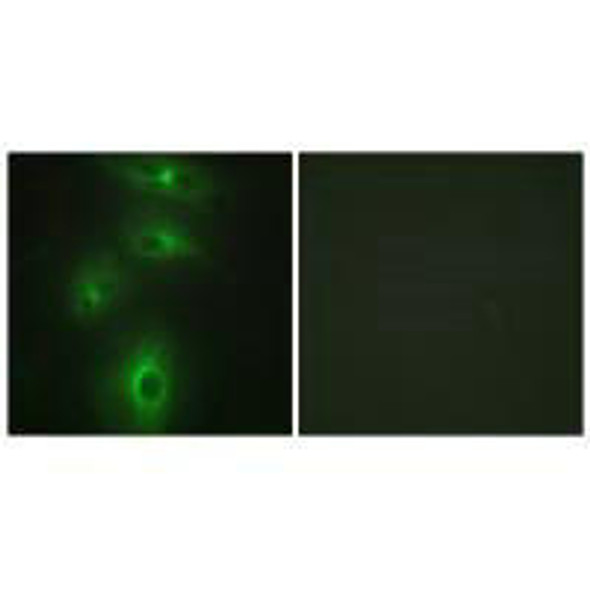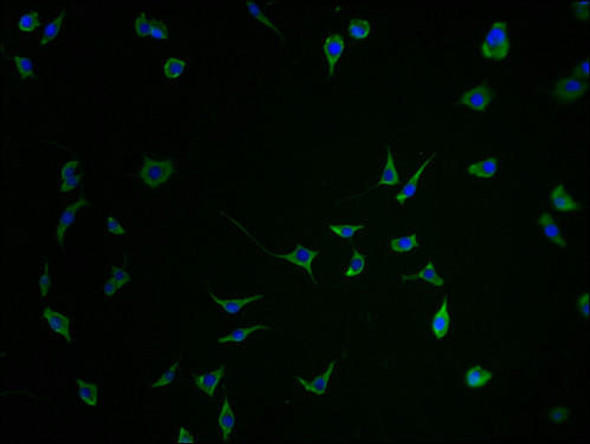Description
TMPRSS3 Antibody (PACO20719)
The TMPRSS3 Polyclonal Antibody (PACO20719) is a valuable tool for researchers studying TMPRSS3, a transmembrane serine protease that plays a critical role in various biological processes. This antibody, generated in rabbits, exhibits high specificity and reactivity towards human samples, making it ideal for use in Western blot applications. By binding to the TMPRSS3 protein, this antibody enables precise detection and analysis in a variety of cell types, allowing for detailed investigations in fields such as molecular biology and cancer research.TMPRSS3 is known for its involvement in processes such as cell signaling, protein processing, and viral entry, highlighting its importance in normal physiological functions as well as in disease pathology.
Researchers can utilize this antibody to explore the functions and mechanisms of TMPRSS3, shedding light on its potential role in diseases such as cancer, viral infections, and genetic disorders. By gaining a deeper understanding of TMPRSS3, researchers can pave the way for the development of innovative therapeutic strategies targeting this protein for improved disease management and treatment outcomes.
| Antibody Name: | TMPRSS3 Antibody (PACO20719) |
| Antibody SKU: | PACO20719 |
| Size: | 50ul |
| Host Species: | Rabbit |
| Tested Applications: | ELISA, IHC |
| Recommended Dilutions: | ELISA:1:2000-1:5000, IHC:1:25-1:100 |
| Species Reactivity: | Human, Mouse |
| Immunogen: | Synthetic peptide of human TMPRSS3 |
| Form: | Liquid |
| Storage Buffer: | -20°C, pH7.4 PBS, 0.05% NaN3, 40% Glycerol |
| Purification Method: | Antigen affinity purification |
| Clonality: | Polyclonal |
| Isotype: | IgG |
| Conjugate: | Non-conjugated |
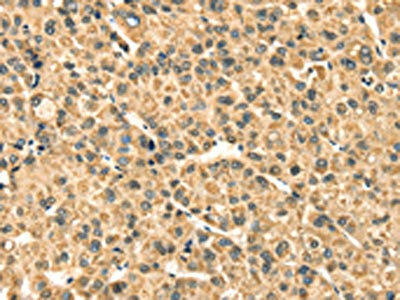 | The image on the left is immunohistochemistry of paraffin-embedded Human liver cancer tissue using PACO20719(TMPRSS3 Antibody) at dilution 1/35, on the right is treated with synthetic peptide. (Original magnification: x200). |
| Background: | This gene encodes a protein that belongs to the serine protease family. The encoded protein contains a serine protease domain, a transmembrane domain, an LDL receptor-like domain, and a scavenger receptor cysteine-rich domain. Serine proteases are known to be involved in a variety of biological processes, whose malfunction often leads to human diseases and disorders. This gene was identified by its association with both congenital and childhood onset autosomal recessive deafness. This gene is expressed in fetal cochlea and many other tissues, and is thought to be involved in the development and maintenance of the inner ear or the contents of the perilymph and endolymph. This gene was also identified as a tumor-associated gene that is overexpressed in ovarian tumors. Alternatively spliced transcript variants have been described. |
| Synonyms: | transmembrane protease, serine 3 |
| UniProt Protein Function: | TMPRSS3: Probable serine protease that play a role in hearing. Acts as a permissive factor for cochlear hair cells survival and activation at the onset of hearing and is required for saccular hair cell survival. Activates ENaC (in vitro). Defects in TMPRSS3 are the cause of deafness autosomal recessive type 8 (DFNB8). DFNA8 is a form of sensorineural hearing loss. Sensorineural deafness results from damage to the neural receptors of the inner ear, the nerve pathways to the brain, or the area of the brain that receives sound information. Defects in TMPRSS3 are the cause of deafness autosomal recessive type 10 (DFNB10). Belongs to the peptidase S1 family. 5 isoforms of the human protein are produced by alternative splicing. |
| UniProt Protein Details: | Protein type:Protease; Membrane protein, integral; Endoplasmic reticulum; EC 3.4.21.- Chromosomal Location of Human Ortholog: 21q22.3 Cellular Component: endoplasmic reticulum; endoplasmic reticulum membrane Molecular Function:sodium channel regulator activity Biological Process: cellular sodium ion homeostasis Disease: Deafness, Autosomal Recessive 8 |
| NCBI Summary: | This gene encodes a protein that belongs to the serine protease family. The encoded protein contains a serine protease domain, a transmembrane domain, an LDL receptor-like domain, and a scavenger receptor cysteine-rich domain. Serine proteases are known to be involved in a variety of biological processes, whose malfunction often leads to human diseases and disorders. This gene was identified by its association with both congenital and childhood onset autosomal recessive deafness. This gene is expressed in fetal cochlea and many other tissues, and is thought to be involved in the development and maintenance of the inner ear or the contents of the perilymph and endolymph. This gene was also identified as a tumor-associated gene that is overexpressed in ovarian tumors. Alternatively spliced transcript variants have been described. [provided by RefSeq, Jan 2012] |
| UniProt Code: | P57727 |
| NCBI GenInfo Identifier: | 13124582 |
| NCBI Gene ID: | 64699 |
| NCBI Accession: | P57727.2 |
| UniProt Secondary Accession: | P57727,Q5USC7, Q6ZMC3, D3DSJ6, |
| UniProt Related Accession: | P57727 |
| Molecular Weight: | 58,324 Da |
| NCBI Full Name: | Transmembrane protease serine 3 |
| NCBI Synonym Full Names: | transmembrane protease, serine 3 |
| NCBI Official Symbol: | TMPRSS3 |
| NCBI Official Synonym Symbols: | DFNB8; DFNB10; ECHOS1; TADG12 |
| NCBI Protein Information: | transmembrane protease serine 3 |
| UniProt Protein Name: | Transmembrane protease serine 3 |
| UniProt Synonym Protein Names: | Serine protease TADG-12; Tumor-associated differentially-expressed gene 12 protein |
| Protein Family: | Transmembrane protease serine |
| UniProt Gene Name: | TMPRSS3 |
| UniProt Entry Name: | TMPS3_HUMAN |
| Antibodies | ELISA Kits |
| TMPRSS3 Antibody (PACO01637) | TMPRSS3 Colorimetric Cell-Based ELISA |
| Secondary Antibody |
| Anti-HRP Goat Anti-Rabbit IgG (H+L) Antibody (CABS014) |
| Recommended Products |
| Anti-FITC Goat Anti-Rabbit IgG (H+L) Antibody (CABS011) |
| Anti-HRP-conjugated Beta Actin Antibody (CABC028) |

